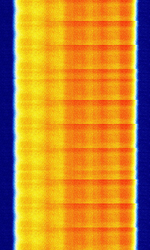CDMA2000 (3G physical layer)
| Cellular | |
|---|---|
| 1G: AMPS - Nordic Mobile Telephone (NMT) 2G: GSM - D-AMPS - 2G CDMA (IS-95) |
CDMA2000 also known as TIA/EIA IS-2000 is a 3rd generation cellular standard developed by 3GPP2. CDMA2000 uses CDMACode Division Multiple Access technology, similar to and backwards compatible with its predecessor cdmaOne. This standard is not compatible with and competed with UMTS (WCDMA), developed by 3GPP.
CDMA2000 has largely been phased out worldwide, in favor of the new 5G NR and 4G LTE networks. In the US, CDMA2000 has been entirely phased out by the major operators such as Verizon and Sprint in 2022, and US Cellular shut down its 1xRTT network in 2024. Small, regional carriers have also been shutting down their CDMA2000 networks in the United States. In December 2024, Cellcom decommissioned its 1xRTT network, and in September 2025, Inland Cellular has shut down its CDMA2000 network.
While rare, as of January 2026, CDMA2000 is still used in some parts of the world, including Ecuador, Myanmar, Uzbekistan and Yemen. CDMA2000 may also be available in United States with limited, regional coverage through GCI Mobile (Alaska) and Sagebrush Cellular (Montana).
Implementations[edit]
CDMA2000 had various implementations designed around different uses. The most common of which are 1xRTT and 1xEV-DO.
CDMA2000 1xRTT, often abbreviated as 1X, is the core CDMA2000 air interface. It was primarily used for calls, being backwards compatible with CdmaOne, but it also offered packet data at speeds up to 153kbps. It utilized one duplex pair of 1.25mhz radio channel, separating the forward and reverse link. 1xRTT offered an additional 64 traffic channels per carrier compared to CdmaOne, allowing for extra capacity. Because of its backwards compatibility, 1xRTT could simply be deployed on top of existing CDMACode Division Multiple Access networks without disrupting existing services.
CDMA2000 1xEV-DO, often abbreviated as EV-DO or EV, is an upgraded data standard for CDMA2000-based networks. It allowed fast internet access at greatly improved speeds when compared to 1xRTT. Similar to 1xRTT, EV-DO utilizes individual 1.25mhz carriers. EV-DO had multiple notable revisions, including 1xEV-DO release 0, 1xEV-DO revision A, and 1xEV-DO revision B. 1xEV-DO, unlike 1xRTT, was a data-only standard incapable of handling phone calls. For this reason, 1xRTT and 1xEV-DO were often paired together as one network, using 1xRTT for calls and 1xEV-DO for high-speed data.
1xEV-DO Release 0 (Rev.0) was the first implementation of 1xEV-DO. It featured up to 2.4mbps on the forward link and 153kbps on the reverse link.
1xEV-DO Revision A (Rev.A) was an enhanced version of Rev.0, allowing improved speeds of up to 3.1Mbps on the forward link, and 1.8Mbps on the reverse link. This standard also improved the capacity of each 1.25mhz radio channel. Rev.A was the most widely deployed 1xEV-DO standard, being used by most major CDMA2000 operators.
1xEV-DO Revision B (Rev.B) was a further enhanced release of EV-DO, supporting the use of multiple aggregated 1.25mhz channels for higher throughput and capacity. This standard allowed up to 15 1.25mhz carriers to be aggregated, which would allow a theoretical 73.5Mbps forward link, and a 27Mbps reverse link. Rev.B was not widely adopted due to the rise of 4G LTE service
Frequencies[edit]
List of frequencies can be found here.
Samples[edit]
Recorded with WFMWideband Frequency Modulation demodulation
EVDO forward link, recorded at 450MHz:
CDMACode Division Multiple Access access probe transmissions, also recorded at 450MHz:
Examples[edit]
CDMA450 on SDR: https://youtube.com/watch?v=2fFh1SyzbCg (uploaded by q2628)
CDMACode Division Multiple Access uplink/reverse link on SDR: https://www.youtube.com/watch?v=kUU0KCfSW48 (uploaded by KP4MD)
CDMA2000 Uplink on SDR: https://old.bitchute.com/video/3uaUddqgcOZk/ (uploaded by Anthony96922)
1xEV-DO Rev.A interference: https://www.youtube.com/watch?v=rlpMV0DlfGc (uploaded by invalidsyscall)
Multi-carrier EVDO (possibly Rev.B) https://youtu.be/aXHIURjQk5Y?si=f8hZAhz9ZHMQtugA (uploaded by ygadai kto, captured in Russia)
